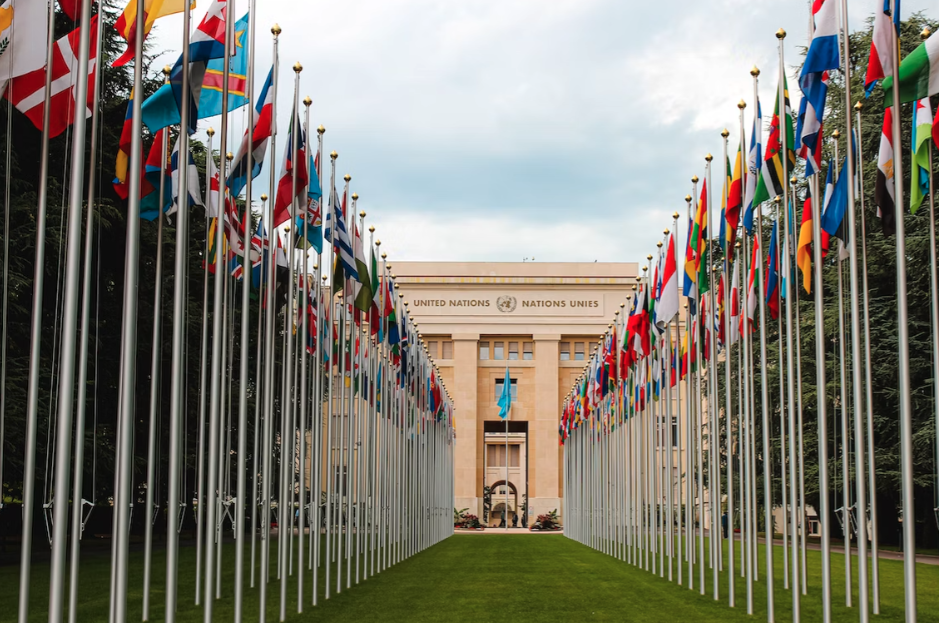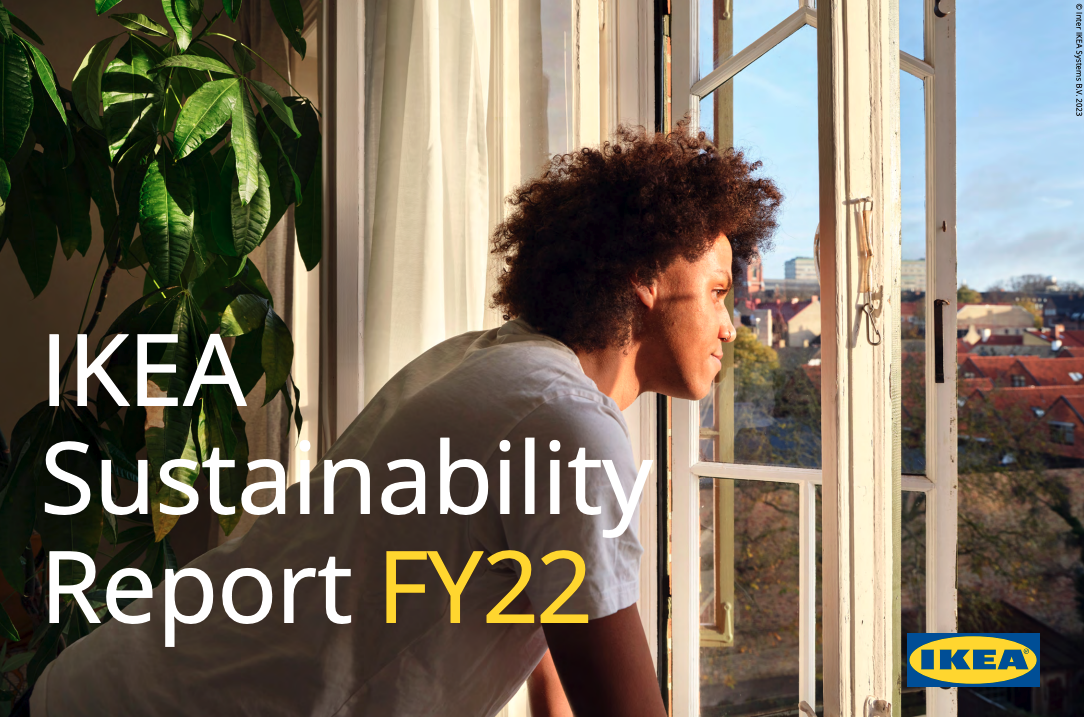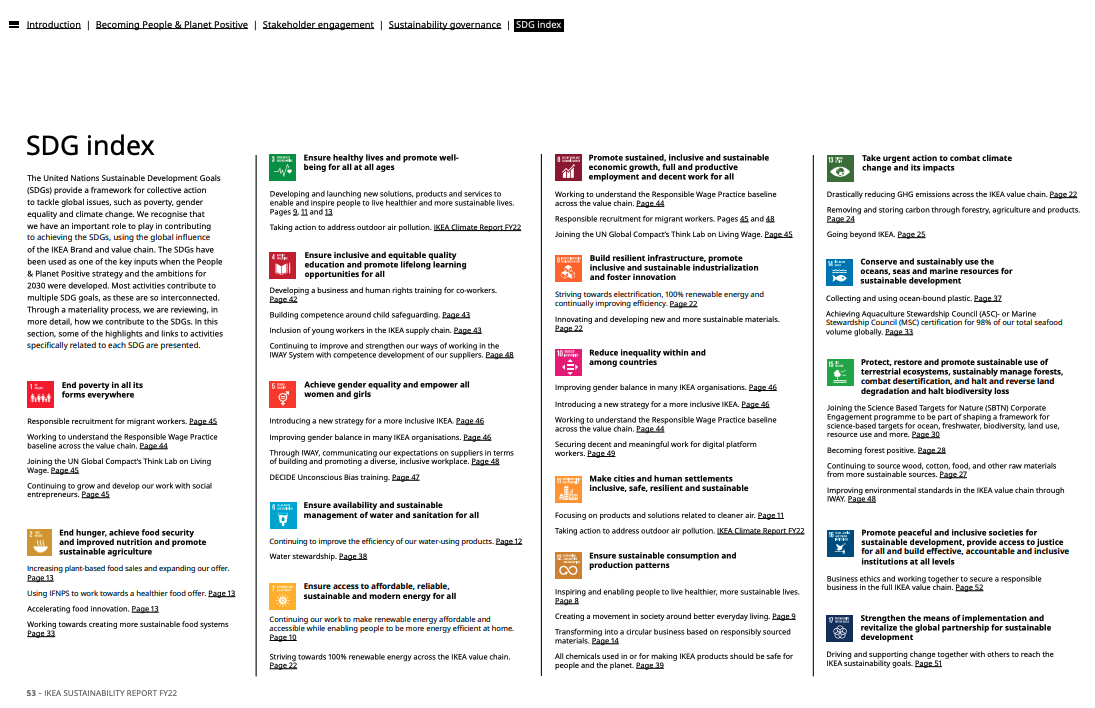
What Is SDG?
The Sustainable Development Goals (SDGs) have emerged as a pivotal framework for addressing the world's most pressing challenges. In this article, we’ll delve into the concept of SDGs and explore their global significance, particularly in the context of businesses incorporating them into their Corporate Social Responsibility (CSR) and Environmental, Social and Governance (ESG) policies.
The SDGs are a set of 17 goals established by the United Nations (UN) in 2015 to guide global efforts towards sustainable development by 2030. These goals encompass a wide range of interconnected issues, including eradicating poverty, promoting gender equality, taking action on climate change and encouraging responsible consumption and production. They serve as a blueprint for governments, organisations and individuals to work together and create a more equitable and sustainable world.
The relevance of businesses incorporating SDGs into their CSR and ESG policies cannot be overstated. By aligning their operations and strategies with the SDGs, businesses can contribute to the broader global agenda and address social and environmental challenges. This integration not only enhances a company's reputation and brand value but also helps drive positive change and fosters long-term sustainability. As such, embracing the SDGs has become an essential aspect of corporate citizenship and responsible business practices in today's interconnected and conscientious world.
Understanding the SDGs
The Sustainable Development Goals (SDGs) address a wide range of interconnected issues, spanning from poverty eradication to environmental conservation and gender equality.
In this article, we provide an overview of each of the 17 SDGs and their specific objectives, highlighting their importance in shaping a sustainable and inclusive future.
-
No Poverty: The goal aims to end extreme poverty by ensuring access to basic resources, social protection and equal economic opportunities for all.
-
Zero Hunger: This goal focuses on eliminating hunger, achieving food security, improving nutrition and promoting sustainable agriculture practices.
-
Good Health and Well-being: It aims to ensure healthy lives and promote well-being for people of all ages, with a particular emphasis on reducing child mortality, combating diseases and improving access to healthcare services.
-
Quality Education: This goal seeks to provide inclusive and equitable education, ensuring access to quality education and lifelong learning opportunities for all.
-
Gender Equality: It aims to achieve gender equality and empower all women and girls, promoting equal rights, opportunities and eliminating discrimination and violence.
-
Clean Water and Sanitation: This goal focuses on ensuring access to clean water and sanitation for all, addressing water scarcity, improving water quality and promoting water conservation.
-
Affordable and Clean Energy: It aims to ensure access to affordable, reliable, sustainable and modern energy for all, while transitioning towards renewable energy sources.
-
Decent Work and Economic Growth: This goal promotes sustained, inclusive and sustainable economic growth, productive employment and decent work for all, fostering entrepreneurship and innovation.
-
Industry, Innovation and Infrastructure: It aims to build resilient infrastructure, promote inclusive and sustainable industrialization and foster innovation to support sustainable development.
-
Reduced Inequalities: This goal seeks to reduce inequalities within and among countries, addressing economic disparities, promoting social inclusion and ensuring equal opportunities for all.
-
Sustainable Cities and Communities: It focuses on making cities and human settlements inclusive, safe, resilient and sustainable, addressing issues such as affordable housing, transportation and urban planning.
-
Responsible Consumption and Production: This goal promotes sustainable consumption and production patterns, aiming to achieve efficient resource use, waste reduction and environmentally friendly practices throughout the value chain.
-
Climate Action: It calls for urgent action to combat climate change and its impacts, including raising awareness, implementing adaptation and mitigation measures and enhancing resilience.
-
Life Below Water: This goal focuses on conserving and sustainably using the oceans, seas and marine resources, combating marine pollution and protecting marine ecosystems.
-
Life on Land: It aims to protect, restore and sustainably manage terrestrial ecosystems, combating deforestation, desertification and biodiversity loss.
-
Peace, Justice and Strong Institutions: This goal promotes peaceful and inclusive societies, ensuring access to justice, building effective, accountable and inclusive institutions and combating corruption and violence.
-
Partnerships for the Goals: It emphasises the importance of global partnerships and cooperation to achieve all the SDGs, mobilising resources, sharing knowledge and fostering collaboration among governments, businesses, civil society and other stakeholders.
The SDGs provide a holistic and integrated approach to sustainable development, addressing social, economic and environmental challenges. Achieving these goals requires collective action and collaboration at all levels, from individuals to governments and businesses. By working towards the SDGs, we can create a better and more sustainable future for current and future generations.
The Benefits of Factoring SDGs into CSR and ESG Policies
Factoring the Sustainable Development Goals (SDGs) into Corporate Social Responsibility (CSR) and Environmental, Social and Governance (ESG) policies can yield numerous benefits for businesses. The SDGs provide a strong foundation and framework for designing successful and authentic policies, offering a range of advantages that contribute to the overall success and sustainability of companies. This section explores the benefits of incorporating SDGs into CSR and ESG policies, focusing on enhanced corporate reputation, talent attraction and retention, risk mitigation, access to new markets, improved stakeholder engagement and customer loyalty.
Easier Reporting
When a corporation's Corporate Social Responsibility (CSR) and Environmental, Social, and Governance (ESG) policies align with the United Nations' Sustainable Development Goals (SDGs), compiling reports becomes easier. The SDGs provide a globally recognised framework, allowing companies to measure their impact and progress in a more structured manner, enhancing transparency, comparability and credibility in reporting efforts. Additionally, alignment with the SDGs demonstrates a company's commitment to addressing global sustainability challenges and attracts stakeholders who value sustainable practices.
Enhanced Corporate Reputation and Brand Value
Aligning CSR and ESG policies with the SDGs enhances a company's reputation as a responsible and purpose-driven organisation. By visibly demonstrating commitment to addressing global challenges, businesses can build trust and credibility among stakeholders, including customers, investors and the wider community. This reputation boost can lead to increased brand value and differentiate the company in a competitive market.
Attraction and Retention of Talent
Incorporating SDGs into CSR and ESG policies also plays a crucial role in attracting and retaining top talent. Today's workforce seeks meaningful employment that aligns with their values and contributes to a greater purpose. By prioritising sustainability and social impact, companies create a more appealing work environment, attracting skilled employees who are passionate about making a difference. This not only boosts productivity but also reduces turnover rates and associated recruitment costs.
Mitigation of Risks and Long-Term Sustainability
By integrating SDGs into their policies, businesses can effectively identify and address potential risks and challenges. SDGs provide a comprehensive framework that helps companies align their strategies with global trends and priorities, enabling them to anticipate and mitigate environmental, social and governance risks. This proactive approach enhances long-term sustainability, safeguarding the company's operations and future growth.
Access to New Markets and Business Opportunities
Incorporating SDGs into CSR and ESG policies opens doors to new markets and business opportunities. The SDGs have gained widespread recognition globally, prompting governments, organisations and consumers to prioritise sustainable and socially responsible products and services. By aligning with the SDGs, businesses can tap into these emerging markets, forge strategic partnerships and explore innovative solutions, ultimately expanding their customer base and driving revenue growth.
Improved Stakeholder Engagement and Customer Loyalty
Integrating SDGs into CSR and ESG policies enhances stakeholder engagement and fosters stronger relationships with customers, employees, investors and communities. By actively contributing to the achievement of the SDGs, businesses demonstrate their commitment to addressing societal and environmental challenges. This resonates with stakeholders who are increasingly seeking to support companies that align with their values. Improved stakeholder engagement, in turn, leads to increased customer loyalty, brand advocacy and investor confidence.
In conclusion, factoring SDGs into CSR and ESG policies offers a multitude of benefits for businesses. From enhanced reputation and talent attraction to risk mitigation, market access and stakeholder engagement, the incorporation of SDGs provides a solid foundation for designing successful and impactful policies. By aligning their operations and strategies with the SDGs, companies can create a sustainable and prosperous future while simultaneously reaping the advantages of responsible business practices.
Case Study: Successful Integration of SDGs into CSR and ESG

IKEA, the Swedish multinational retail giant, has long been recognised for its commitment to sustainability and its efforts to integrate the Sustainable Development Goals (SDGs) into its operations. A recent sustainability report provides valuable insights into its sustainable supply chain practices, as well as its progress towards the SDGs.
According to IKEA's Sustainability Report, the company has implemented various initiatives aligned with the SDGs, focusing particularly on Goal 12: Responsible Consumption and Production, Goal 13: Climate Action and Goal 15: Life on Land.
In terms of responsible consumption and production (SDG 12), IKEA has made significant strides to promote circularity and minimise waste. The company has introduced initiatives like the "Buy Back" and "Sell Back" programs, allowing customers to return and resell used furniture, thereby extending the product lifecycle and reducing landfill waste. IKEA also emphasises sustainable sourcing and has set ambitious targets to use only renewable or recycled materials in its products by 2030.
Regarding climate action (SDG 13), IKEA is committed to becoming climate positive and aims to achieve this by transitioning to renewable energy sources. The company has invested heavily in renewable energy projects, such as wind farms and solar installations, to power its operations. Furthermore, IKEA aims to achieve zero-emission deliveries by 2025, using electric vehicles and other sustainable transportation methods.
In the area of life on land (SDG 15), IKEA strives to promote responsible forest management and biodiversity conservation. The company has implemented strict guidelines for its wood sourcing, ensuring that it comes from responsibly managed forests. Additionally, IKEA actively supports reforestation projects and works towards achieving a net positive impact on biodiversity.
IKEA's Sustainability Report also highlights the company's efforts to tackle other SDGs indirectly. For example, through its "Better Cotton Initiative," IKEA contributes to Goal 1: No Poverty and Goal 2: Zero Hunger by supporting cotton farmers in developing countries. Furthermore, through partnerships with organisations like UNICEF, IKEA addresses Goal 4: Quality Education by promoting child rights and access to education.
By leveraging its Sustainability Report's SDG Index, IKEA demonstrates its commitment to transparency and accountability in achieving the SDGs. The report serves as a valuable tool for stakeholders to assess IKEA's progress, allowing for greater trust and engagement.
Overall, IKEA's sustainable supply chain practices exemplify its dedication to the SDGs. Through responsible consumption and production, climate action and the promotion of life on land, IKEA sets an example for businesses worldwide. By integrating the SDGs into their sustainability strategies, companies like IKEA can drive positive change and contribute to a more sustainable and equitable future.

How To Bring Your Business Into Alignment with SDG m
Bringing your business into alignment with the Sustainable Development Goals (SDGs) requires a strategic approach. By following these four steps, you can effectively integrate the SDGs into your business practices and contribute to sustainable development.
-
Conducting a thorough SDG assessment: Begin by assessing how your business currently aligns with the SDGs. Identify which goals are most relevant to your industry and operations. Evaluate your current practices, policies and impacts and identify areas for improvement. This assessment will provide a baseline understanding of your company's performance and guide your actions moving forward.
-
Setting measurable goals aligned with SDGs: Once you have identified the SDGs that are most relevant to your business, set specific, measurable, achievable, relevant and time-bound (SMART) goals that align with those SDGs. For example, if Goal 7 (Affordable and Clean Energy) is relevant, you could set a goal to transition a certain percentage of your energy consumption to renewable sources within a specific timeframe. Clearly define your objectives and develop key performance indicators (KPIs) to track progress.
-
Collaborating with stakeholders and partnerships: Achieving the SDGs requires collaboration and partnerships. Engage with relevant stakeholders, including employees, customers, suppliers, NGOs and local communities. Seek partnerships with organisations that share similar goals and values. Collaboration can lead to shared knowledge, resources and innovative solutions. Together, you can amplify your impact and achieve collective progress towards the SDGs.
-
Monitoring, reporting and accountability: Establish a robust monitoring and reporting system to track your progress towards SDG-aligned goals. Regularly measure and evaluate your performance against set targets and KPIs. Transparently communicate your progress through sustainability reports or other channels. Embrace accountability by regularly reviewing and reassessing your strategies, making necessary adjustments along the way. Engage with stakeholders and seek their feedback to continuously improve your sustainability efforts.
By following these steps, businesses can effectively bring themselves into alignment with the SDGs and contribute to sustainable development. Embrace the SDGs as a strategic framework and seize the opportunity to drive positive change while enhancing your business's reputation, resilience and long-term success.
Transform your business’ approach to SDGs
In conclusion, incorporating the Sustainable Development Goals (SDGs) into businesses' Corporate Social Responsibility (CSR) and Environmental, Social, and Governance (ESG) policies is of paramount importance in today's global landscape. By embracing the SDGs, businesses can align their strategies with global priorities, address societal and environmental challenges, and contribute to a more sustainable future.
The benefits of incorporating SDGs into CSR and ESG policies are significant, including enhanced corporate reputation, talent attraction, risk mitigation, access to new markets, stakeholder engagement, and customer loyalty. Businesses that prioritise sustainability and social impact not only strengthen their bottom line but also become drivers of positive change in their communities and the world.
In this journey towards SDG integration, KindLink offers a valuable solution for businesses looking to digitally transform their SDG and ESG reporting. With KindLink's platform, businesses can streamline and enhance their reporting processes, effectively communicating their progress towards the SDGs and ESG goals. KindLink empowers businesses to measure, monitor and transparently report their sustainability efforts, fostering accountability and inspiring others to join the movement.
By embracing the SDGs in their CSR and ESG policies and leveraging tools like KindLink, businesses can play a pivotal role in advancing sustainable development. Let us seize this opportunity to create a more inclusive, equitable, and resilient world, where business success goes hand in hand with social and environmental progress. Together, we can build a brighter future for generations to come.
Transform your SDG reporting: book a KindLink demo today.

